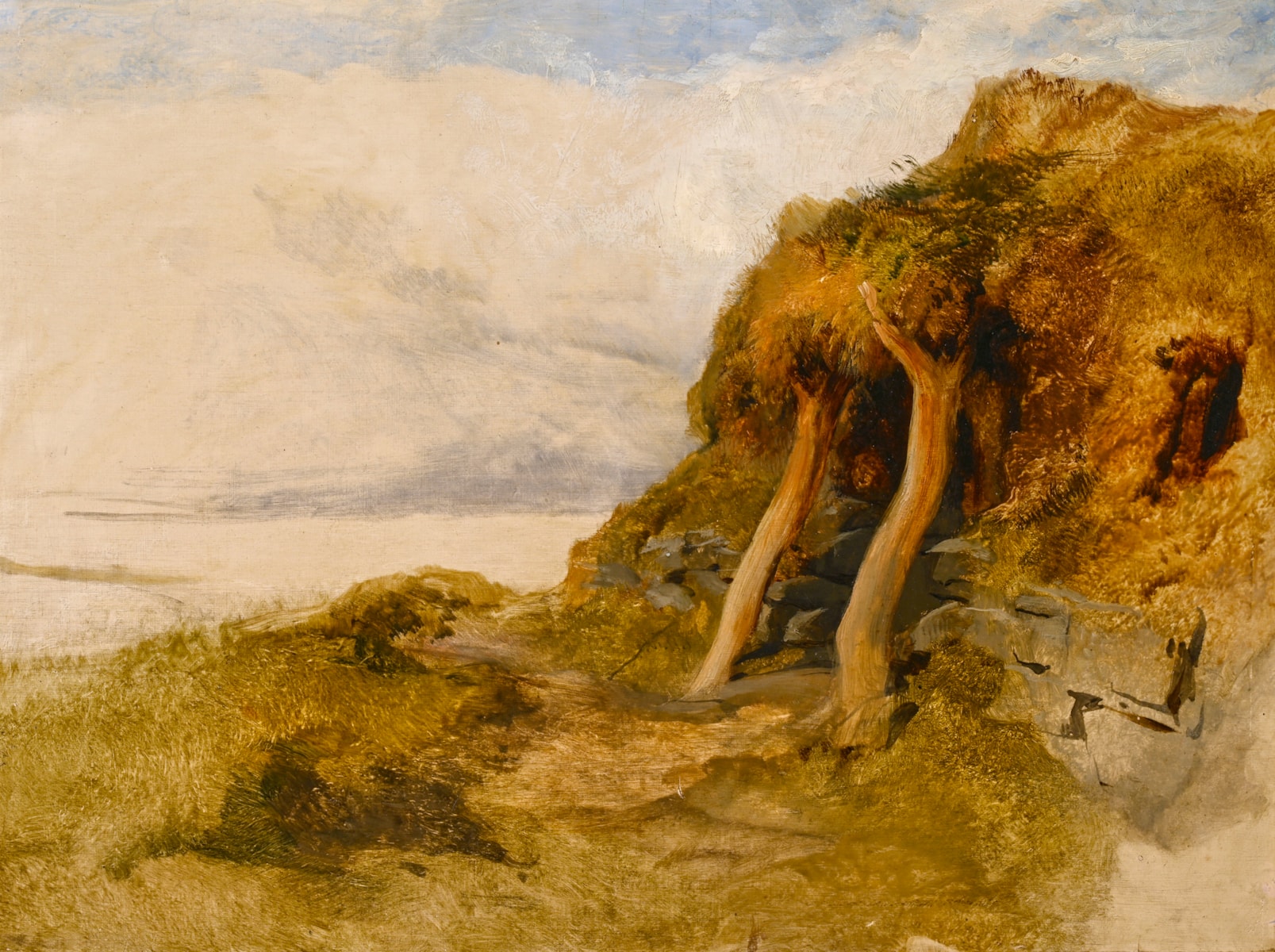
Sir Edwin Henry Landseer (London 1802 - London 1873)
A Highland Bothy, study for ‘The Drover’s Departure’, 1835
Description:
inscribed lower left in the paint: Noughty / Sept 14th 1834
oil on board
455 x 607 mm
Provenance:
The artist’s studio
probably sold: The Remaining Works of Sir E. Landseer, R.A.; Christie's, London, 8-14 May 1874
The Tryon Gallery, London as Bonnie Prince Charlie’s Hiding Place, Glenfeshie, sketch for “The Highland Farewell” (label on the verso)
Private Collection, London
Note:
This is a study for the simple turf-covered bothy in The Drover’s Departure painted in 1834-1835, and exhibited the same year at the Royal Academy, where it was described in several reviews as the star attraction. Commissioned by the 6th Duke of Bedford, one of the artist’s most important patrons, it was later purchased by John Sheepshanks who gave it to the Victoria and Albert Museum in 1857.
Of all the places where Landseer painted, his favourite sketching ground was the remote valley of Glenfeshie. It was there that he spent much time in the company of his patron’s wife the Duchess of Bedford, and where she had constructed a series of rough huts as a retreat. His sketch of The Duchess of Bedford's Hut, Glenfeshie, now in the Philadelphia Museum of Art, shows one with the same distinctive entrance. Our sketch is precisely dated to 14 September 1834 and would have been done on the spot. The artist’s board support is similar in size to the unfinished sketch in Philadelphia. The location Noughty is not clear. This is a rare study related to one of the artist’s finest paintings dating from his very best period.
Although the exact nature of their relationship remains uncertain, the artist and the Duchess remained close for thirty years. He was twenty-one when they met, she twice his age. Rumours persisted that Rachel Russell, the Duchess’s tenth child, who Landseer sketched endlessly, was fathered by the painter.
Nancy Durrant in the 17 November Times review of the 2018 exhibition Landseer’s The Monarch of the Glen at the National Gallery, discussed Glenfeshie and the artist’s love for Scotland:
"Landseer adored the Highlands, which he first saw in 1824, when he visited Sir Walter Scott. The landscape and history captivated him and his images were as much a part of creating the enduringly romantic view of Scotland as the novelist’s stories.
Landseer spent many autumns in Glenfeshie, sketching, hunting and fishing, usually in the company of Georgiana, whose own enthusiasm for the Highlands led her to commission the construction of a series of absurd little huts (resembling peasant dwellings) at Glenfeshie, where she and her lover could entertain friends and play at being Highlanders, a little bit like Marie Antoinette. A Landseer painting at the Philadelphia Museum of Art depicts one of these huts; if you look carefully through the door, you can see a silver candelabra on a sideboard."
